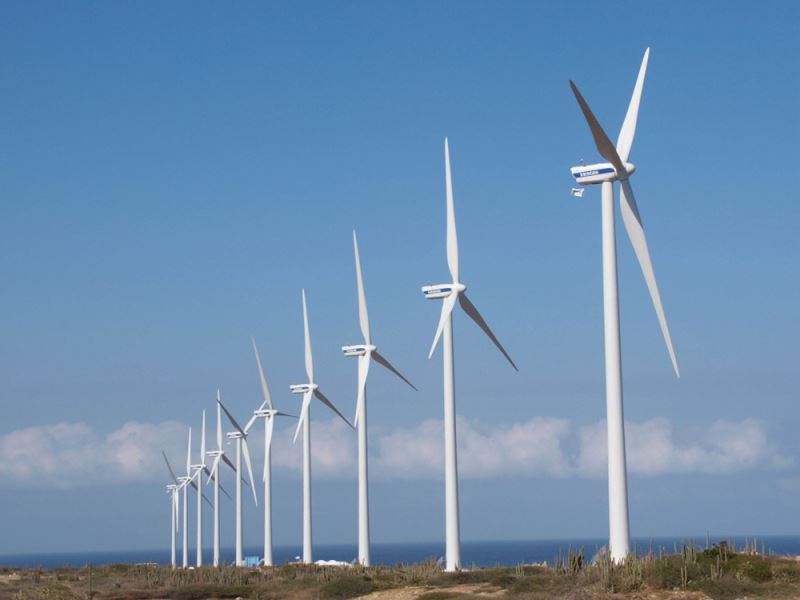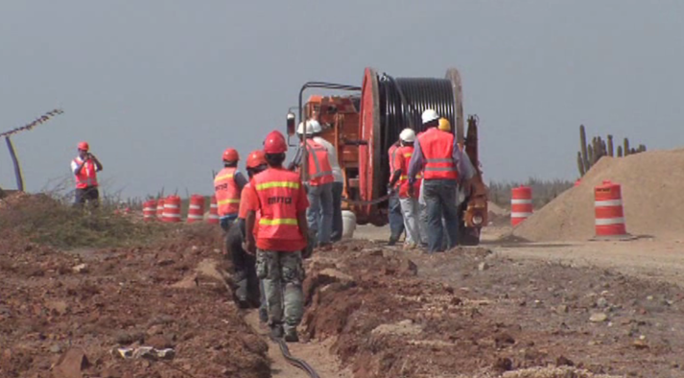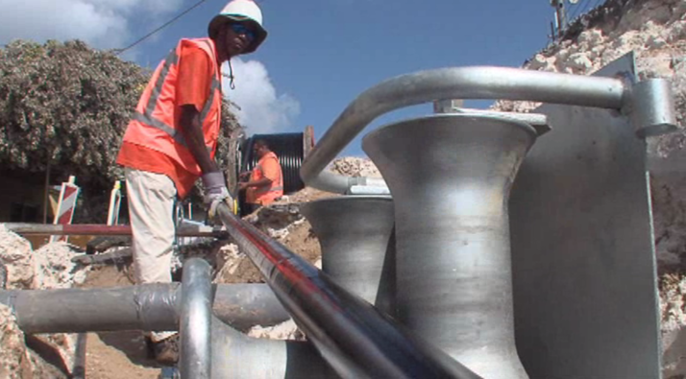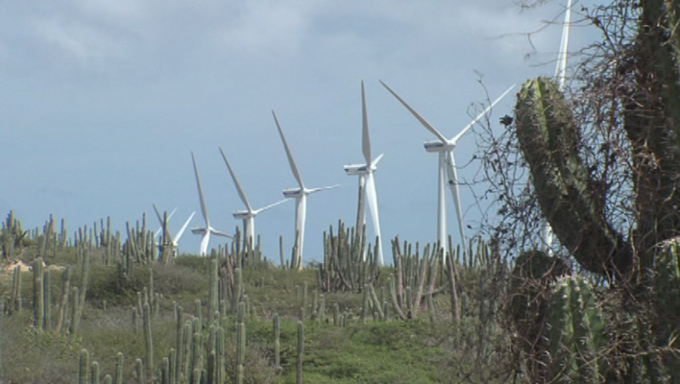We have now offset another 50,000 ton CO2eq in a Gold Standard certified project! Thank you for taking part in this!
The Caribbean is a region heavily dependent on fossil fuels, while at the same time it’s a particularly promising place for renewable energies with abundant sun and wind conditions. Demand is comparatively low because the islands have small populations, which means that small scale energy solutions have the capacity to cover a large share of the energy needs.

This is our project
Aruba is one of the islands moving towards reduced dependency on fossil fuels and increased share of renewables. The first initiative for wind energy production on the island is the Wind Park Vader Piet N.V, which we are supporting through the purchase of carbon credits!
This wind park consists of 10 wind turbines that are located on an uninhabited part of the island. With a production capacity of 3 MW each, these turbines supply 12-14% of the total energy needed on the island! Since all energy consumed before the implementation of this project came from fossil fuel, the carbon intensity of the electricity available on the island was very high. Fortunately, Wind Park Vader Piet N.V has instigated a change for the better.
Plans for the future
The national energy producer, WEB Aruba, made a commitment which increased the share of renewables to 18% in 2018, and reduced the fossil fuel consumption by 40%. Moving forward, the goal is to reduce the fossil fuel consumption by a total of 67% and to increase renewables to a total of 40% by 2022. After the first wind park was built, a first solar park has also been installed and another wind park is in the development phase.

Construction of the wind park 
Construction of the wind park
Why not 100% renewable today?
A challenge that Aruba and other small island nations is facing when transitioning to renewables is the grid stability. Wind and solar are intermittent energies, which means that energy is produced during certain times of the day when it’s sunny or windy. However, this doesn’t always correspond with the time that the energy is needed. In some cases, energy use in industries can be rescheduled to match peak energy availability hours, but for household electricity this is much harder.
To manage this, one option is to invest in energy storage such as batteries, and another one is to use a base load energy that can be adjusted to produce energy when demand is high and renewable production is low. In some cases, this can be done with geothermal energy (like our project Dora II in Turkey), more common is hydro power, nuclear energy or fossil fuels. WEB Aruba is working with a commitment to resolve this, taking into consideration that the development has to happen over time in order to maintain grid stability as infrastructure needs to keep up. It is also crucial to keep energy prices affordable to the local population. In Europe and other places, this challenge is cushioned by our interconnected grids, where energy surplus can be sent to a neighboring country, and energy can be purchased from where the production is the greenest in the moment.
Read more about the project in the Gold Standard Registry

A big thanks to all of you for enabling this development!
Do you want to contribute to this, and other similar projects? Calculate your carbon footprint and start your offsetting today!